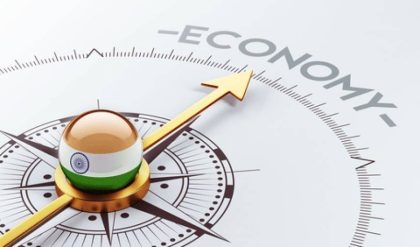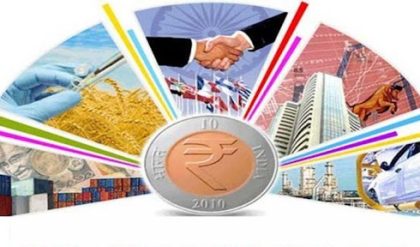· The economic growth that a country and its people achieve over a period of time, is achieved at the cost of the environment.
· Environment is badly damaged because of various economic activities — industrial activities, mining activities, and infrastructure development, etc.

· Sustainable development is the need of the hour. It has the potential to address the challenges of the environment and also of the economy.
· All biotic and abiotic factors collectively constitute environment.
· All living organisms, such as animals, human beings, plants, birds, insects, and all other single cell and multi-cell organisms are biotic elements.
· All other non-living things, such as air, water, land, etc. are abiotic elements.
Significance of Environment
· Environment plays a significant role in every aspect of life. The contributions of the environment are varied: It provides resources (both renewable and non-renewable resources).
o It has the capacity to assimilate wastes.
o It provides diversity, essential for the sustenance of life.
o It provides aesthetic services.
· Environment has the carrying capacity, i.e., it re-generates some sorts of resources provided the rate of exploitation is lesser than the rate of re-generation; if the rate of exploitation increases, the resources get exhausted.
· Environment has the capacity to expel impurities (various pollution in the environment); it has limited capacity (absorption capacity); hence, if the rate of pollution is more than the rate of purification, then it is a threat to the environment (i.e. environmental crisis)
Major Problems
· The environmental crisis creates many problems such as depletion of Ozonelayer and Global Warming at the global level.

· Environment has a major impact on the life and living of people; it may cause health issues, natural calamities (floods, earthquakes, droughts, etc.).
· India has abundant natural resources (both renewable and non-renewable resources).
· An exponential increase in population threatened led to over-exploitation of the natural resources which thereby threatened the environment.
· Some problems with the exploitation of resources in India are −
- Water pollution
- Air pollution
- Land degradation
- Deforestation
- Desertification,
- Wildlife extinction, etc.
· The per capita forest land in India is about 0.08 hectare, while the requirement is 0.47 hectare.
· India has about 17% of the world’s total human population and 20% of the world’s total animal population, whereas, it has only 2.5% of world’s total geographical area.
· The number of vehicles in India increased from 3 lakhs (in 1951) to 67 crores in 2003.
· The use of motor vehicles is one of the major sources of air pollution in India.
· The Central Pollution Control Board (CPCB) of India has identified 17 categories of polluting industries.
· Environmental crisis also leads to economic crisis.
Sustainable Development
· The notion of Sustainable Development was adopted by the United Nations Conference on Environment and Development (UNCED).
· Sustainable Development is defined as the development that meets the needs of the present without compromising the ability of future generation to meet their own needs.
· The Brundtland Commission suggested that meeting the needs of the future depends on how well we balance social, economic, and environmental objectives, or needs, when making decisions today.
· Using the non-conventional sources of energy (such as Hydro power, wind power, geothermal energy, tidal power, etc.) is one the best strategies to protect the environment.
· In rural India, a good number of people still use wood and other biomass products for cooking, and it has a great negative impact on the environment as the process involves cutting of trees; hence, providing them LPG as an alternative strategy would help save the environment.
· Promoting the use of CNG for motor vehicles is another important alternative.
· Solar power is very handy to use; a solar power plant can be established either for a single household and also for a big factory.
· Promoting the use of traditional knowledge practices is also environmental friendly and also good for the human health.
· Organic farming also needs to be promoted at large scale to improve the environmental condition, as conservation of the environment is the major objective of sustainable development.
· Pollution Control Boards − Central Pollution Control Board (CPCB), established in 1974, aims to address the environmental concerns especially, water and air pollution.
· The CPCB is responsible to investigate, collect, and provide information related to water, air, and land pollution across the country. It also sets a standard for the sewage/trade effluent and emissions of various industrial pollutants.






Comments are closed.